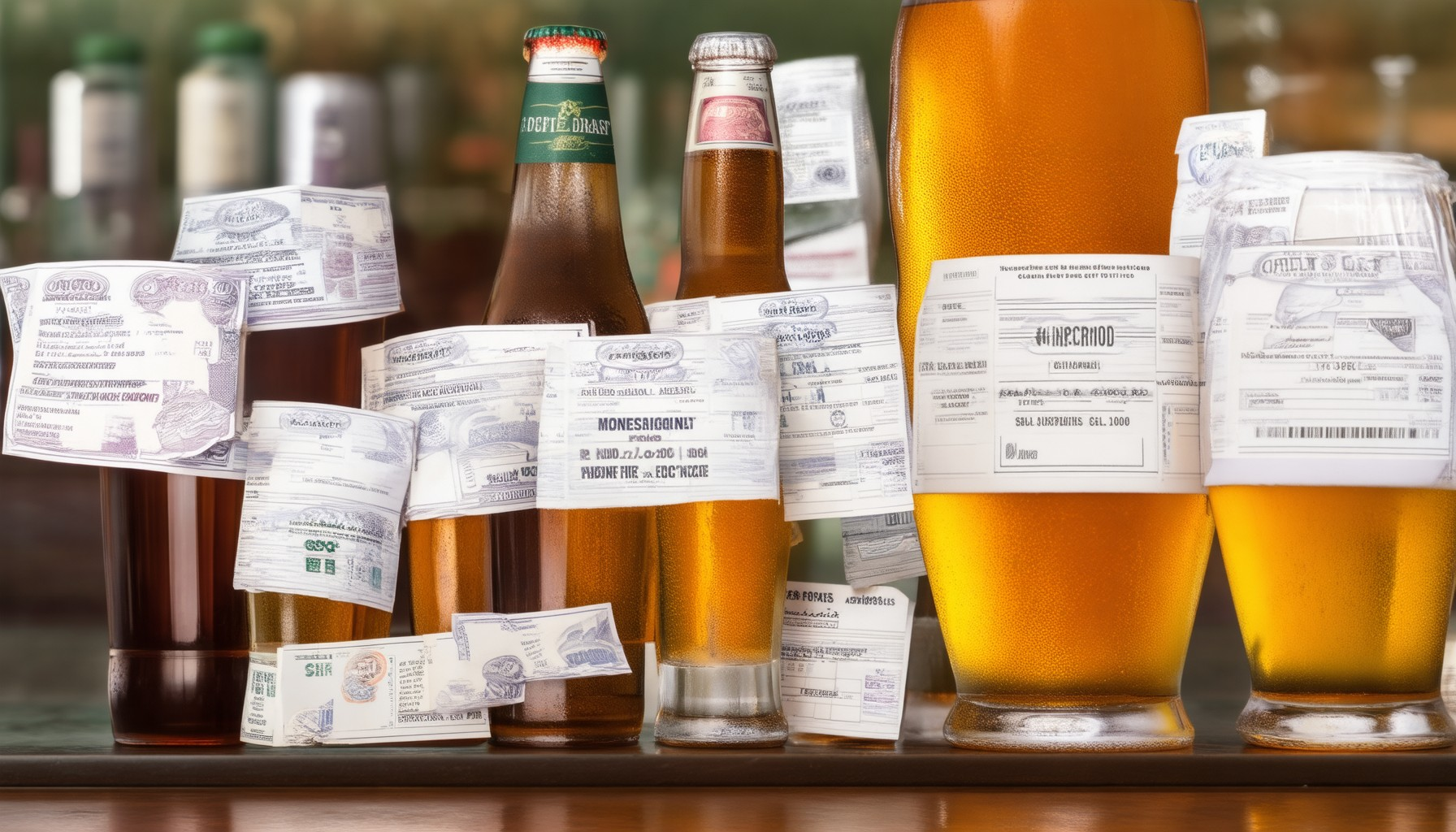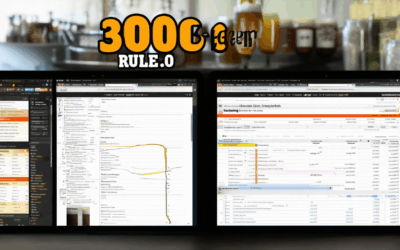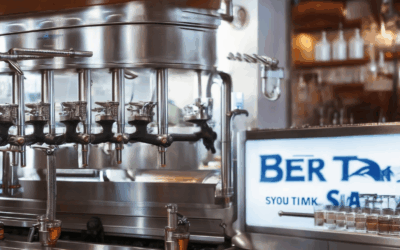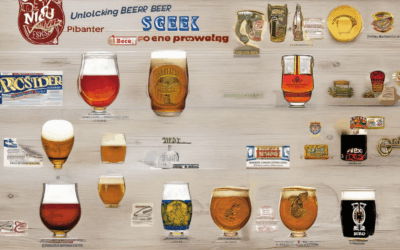Beer is often seen as a simple refreshment, but for many, it’s more than just a casual drink—it’s a lifestyle choice, a social ritual, or even a business expense. While enjoying a cold one can be a delightful experience, understanding the financial side of beer consumption is crucial for anyone looking to manage their spending effectively. Whether you’re running a bar, hosting gatherings, or simply trying to keep track of your personal budget, knowing how to handle beer expenses wisely is essential. In this guide, we’ll explore the ins and outs of beer expenses, delve into common examples, and provide practical tips to help you stay on top of your finances. From tracking tools to budgeting strategies, this article has everything you need to understand and manage beer expenses like a pro.
Key Takeaways
– Raw materials drive significant costs in beer production, impacting ingredient prices and supply chain stability.
– Production costs include machinery, energy, and labor, making them a major factor in brewery budgets.
– Distribution fees add to expenses due to transportation logistics and fuel costs for delivering beer to retailers.
– Marketing and branding play a crucial role in increasing visibility and sales, requiring substantial investment.
– Regulatory costs involve licenses, permits, and taxes, adding complexity to brewery operations.
– Research and development investments drive innovation, enhancing product quality and market competitiveness.
– Operational costs, such as rent and utilities, are essential for maintaining brewery facilities and operations.
– Sustainability initiatives can reduce long-term expenses through eco-friendly practices and energy efficiency.

Common Examples of Beer Expenses
- Malt and Ingredients: Breweries spend on malting barley, hops, yeast, and water.
- Energy Costs: Includes electricity for brewing equipment and fuel for transportation.
- Labor: Wages for brewers, packaging staff, and administrative personnel.
- Packaging: Costs associated with bottles, cans, labels, and bottle caps.
- Distribution: Fuel and logistics costs for delivering beer to retailers and consumers.
- Taxes and Licensing: Fees for permits, excise taxes, and other regulatory requirements.
- Equipment Maintenance: Repairs and upkeep of brewing tanks, fermenters, and other machinery.
- Research and Development: Costs for experimenting with new recipes and technologies.
- Sustainability Initiatives: Investments in eco-friendly practices and energy-efficient equipment.
What Typically Falls Under Beer Expenses?
Beer expenses encompass a variety of costs associated with the production, distribution, and sale of beer. Here’s a breakdown of the primary categories:
- Production Costs: Includes raw materials like malt, hops, yeast, and water, as well as energy for brewing processes, machinery maintenance, and labor for production staff.
- Distribution Costs: Covers transportation of beer from breweries to retail locations, fuel for vehicles, and storage facilities for maintaining freshness during transit.
- Sales and Marketing Costs: Encompasses advertising, promotional activities, packaging design, and discounts or incentives offered to retailers or consumers.
- Administrative Costs: Includes rent for brewery facilities, utilities, office staff salaries, and general overhead expenses.
- Research and Development Costs: Invested in developing new beer recipes, improving brewing techniques, and exploring sustainable practices.
This comprehensive approach ensures that all aspects contributing to the cost of producing and distributing beer are accounted for, providing a clear understanding of where these expenses fall.

Effective Ways to Track and Manage Beer Expenses
To effectively track and manage beer expenses, consider implementing a combination of budgeting tools, expense trackers, and category-specific management strategies. Here’s a structured approach:
- Budgeting Tools
Utilize accounting software like QuickBooks or Xero to set budgets for raw materials, labor, and utilities. These tools allow for detailed tracking and help in forecasting future expenses. - Expense Trackers
Implement an expense tracking app specifically designed for the food and beverage industry. These apps can monitor purchases, vendor invoices, and other operational costs in real-time. - Category-Specific Management
Break down expenses into categories such as raw materials, production, packaging, and distribution. This helps in identifying cost drivers and areas for cost reduction. - Brewery Management Systems
Leverage brewery-specific software like Fishbowl to integrate inventory management with expense tracking. This ensures seamless monitoring of all operational costs. - Cloud-Based Solutions
Use cloud-based expense management platforms like Zoho Expense to access financial data from anywhere. These solutions often integrate with brewery inventory systems. - Point-of-Sale Systems
For bars or pubs, employ POS systems such as Square or Toast . These systems provide real-time sales data and expense tracking, aiding in better financial planning. - Manual Methods
For smaller operations, use spreadsheets or simple apps to track expenses manually. While less efficient, they can still provide a foundation for basic tracking needs. - Regular Audits and Reviews
Conduct regular financial audits to review expense reports and identify trends. This proactive approach helps in implementing cost-saving measures and maintaining profitability.
By combining these strategies, businesses can gain better control over their beer-related expenses, ensuring financial health and operational efficiency.

What Generally Falls Under Beer Expenses?
Beer expenses encompass a wide range of costs associated with the production, distribution, and marketing of beer. Here’s a breakdown of the primary categories:
- Raw Materials: Costs for ingredients such as hops, yeast, malt, and water.
- Production Costs: Includes machinery, energy, and labor for brewing processes.
- Distribution Fees: Transportation and logistics costs for delivering beer to retailers and consumers.
- Marketing and Branding: Expenses related to advertising, promotions, and branding efforts.
- Regulatory Costs: Licenses, permits, and compliance-related expenses.
- Research and Development: Costs for developing new recipes or improving brewing processes.
- Other Operational Costs: Rent, utilities, insurance, and taxes.
This comprehensive approach ensures that all aspects contributing to beer expenses are considered, providing a clear understanding of the financial aspects involved in the beer industry.
What Typically Falls Under Beer Expenses?
Beer expenses encompass a variety of costs associated with the production, distribution, and sale of beer. Here’s a breakdown of the primary categories:
- Production Costs: Includes raw materials like malt, hops, yeast, and water, as well as energy for brewing processes, machinery maintenance, and labor for production staff.
- Distribution Costs: Covers transportation of beer from breweries to retail locations, fuel for vehicles, and storage facilities for maintaining freshness during transit.
- Sales and Marketing Costs: Encompasses advertising, promotional activities, packaging design, and discounts or incentives offered to retailers or consumers.
- Administrative Costs: Includes rent for brewery facilities, utilities, office staff salaries, and general overhead expenses.
- Research and Development Costs: Invested in developing new beer recipes, improving brewing techniques, and exploring sustainable practices.
This comprehensive approach ensures that all aspects contributing to the cost of producing and distributing beer are accounted for, providing a clear understanding of where these expenses fall.

What Typically Falls Under Beer Expenses?
Beer expenses encompass a variety of costs associated with the production, distribution, and sale of beer. Here’s a breakdown of the primary categories:
- Raw Materials: The cost of ingredients such as malt, hops, yeast, and water, which can vary based on availability and quality.
- Energy Consumption: Costs associated with powering machinery, heating tanks, and other energy-intensive processes.
- Labor Costs: Wages for brewers, packaging personnel, and administrative staff involved in the production process.
- Packaging: Costs for materials like bottles, cans, kegs, and barrels, along with the labor required for sealing and preparing these containers.
- Transportation: Expenses for delivering beer to distributors, retailers, and consumers, including fuel, vehicle maintenance, and logistics.
- Marketing and Branding: Costs incurred for designing labels, advertising campaigns, and promotional activities to market the beer effectively.
- Regulatory Costs: Taxes, licensing fees, and compliance-related expenses necessary for operating a brewery or distributing beer legally.
- Maintenance: Costs for maintaining and repairing brewing equipment, vehicles, and facilities to ensure smooth operations.
- Research and Development: Expenditures on developing new products, improving brewing techniques, and innovation in beer production.
- Sustainability Initiatives: Costs associated with eco-friendly practices, such as energy-efficient equipment, waste reduction, and carbon offset programs.
These expenses collectively contribute to the overall cost of producing and distributing beer, making them a critical factor in pricing and profitability for breweries and beverage companies.





0 Comments